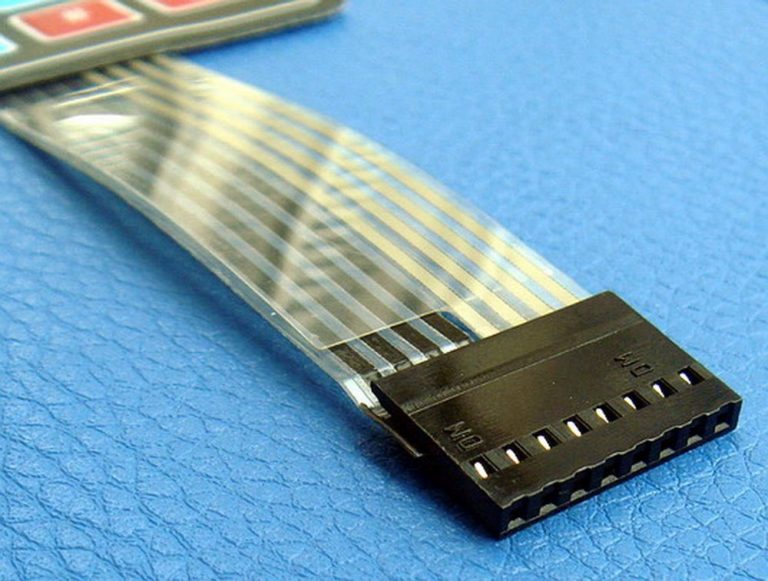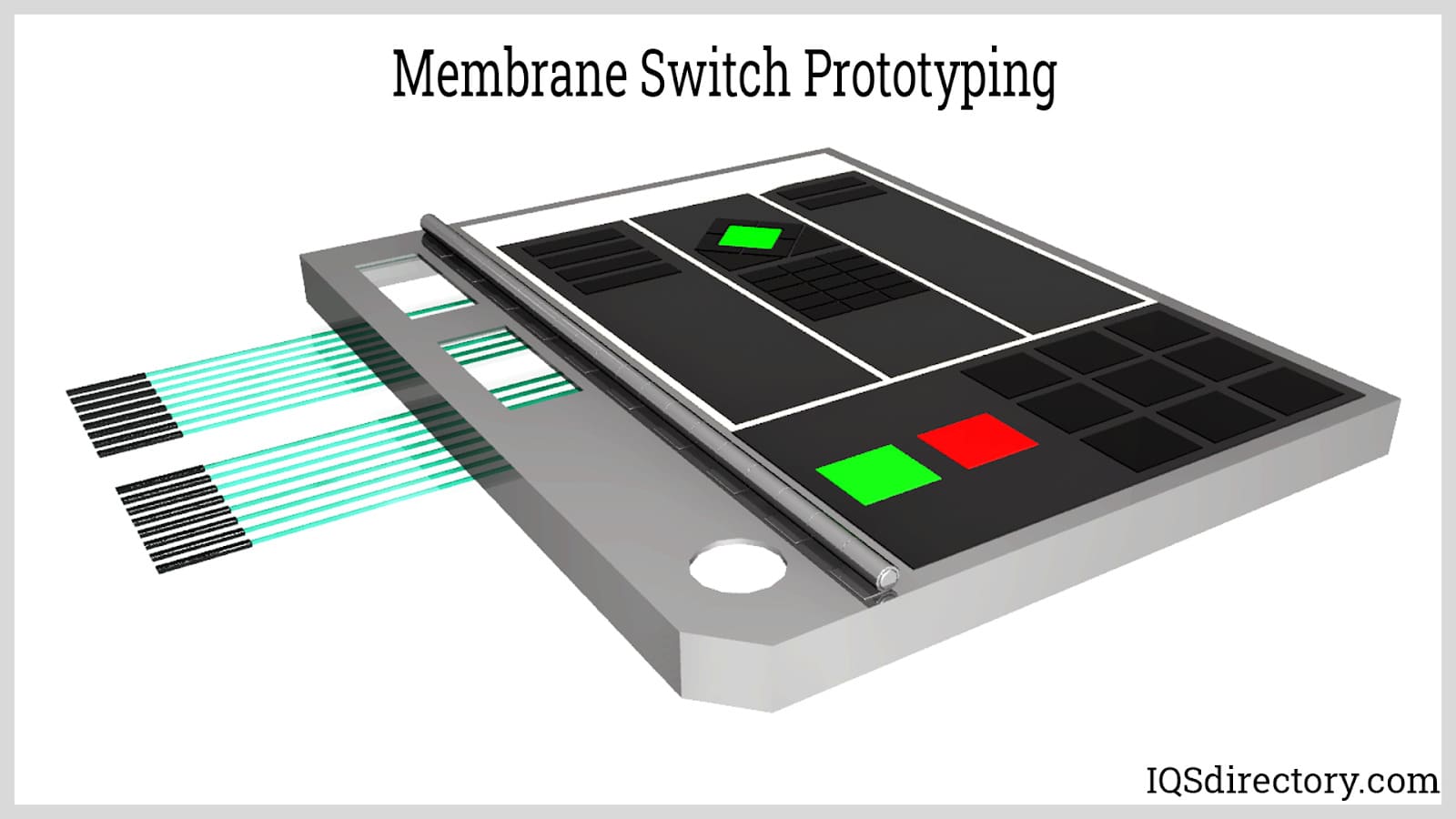All About Membrane Layer Switch Over: Understanding Its Design and Capability
When you believe about the control interfaces in modern tools, membrane buttons commonly enter your mind. These elements are greater than simply buttons; they mix style and functionality flawlessly. Comprehending just how they function and what makes them reliable can change your viewpoint on everyday electronic devices. There are subtleties to their layout and efficiency that you might not be mindful of. Let's explore what sets membrane layer switches over aside from various other control systems.
What Are Membrane Layer Buttons?

Membrane layer switches can also be tailored relating to shape, dimension, and graphics, permitting producers to develop unique user interfaces tailored to specific products. Generally, membrane switches play a significant function in enhancing individual experience across a vast array of applications.
Just How Membrane Layer Switches Job
When you press a key on a membrane layer switch, it triggers an uncomplicated yet efficient mechanism. membrane switch manufacturer. The leading layer, typically made of adaptable product, pushes down onto a conductive layer beneath it.
You'll observe that the responsive feedback differs based on the button style, supplying either a soft click or a more noticable response. Once you launch the key, the membrane go back to its original setting, reopening the circuit and stopping the signal. This procedure takes place almost instantly, ensuring a receptive user experience.
Membrane switches are popular as a result of their longevity and resistance to dirt and moisture, making them optimal for various applications, from house appliances to medical gadgets. Understanding this procedure assists you value their extensive use.
Secret Elements of Membrane Switches
Recognizing the vital parts of membrane switches is basic for grasping their functionality and design. At the core, you'll discover the visuals overlay, which gives the aesthetic user interface for users. Underneath that, there's a spacer layer that divides the circuit layers, making certain that they do not make call up until pushed. The circuit layer is where the magic occurs; it contains conductive traces that finish the circuit when you press the switch. Another crucial element is the glue support, permitting the button to comply with surface areas firmly. Lastly, the protective layer shields against environmental factors and put on, extending the switch's lifespan. Each element plays a substantial role in ensuring trusted efficiency and user communication. By understanding these parts, you'll get insight into just how membrane switches run and their importance in different applications.
Materials Utilized in Membrane Layer Switch Style
The performance and durability of membrane layer changes greatly depend on the products used in their layout. You usually encounter polyester and polycarbonate as main substrates as a result of their outstanding stamina and adaptability. These materials withstand scrapes and chemicals, making them suitable for demanding atmospheres.
The conductive layers usually utilize silver or carbon, selected for their reliability and conductivity. membrane switch manufacturer. Silver supplies premium performance, while carbon is a cost-efficient alternative. For the overlay, you might take into consideration a matte or shiny finish, depending upon your visual requirements and user experience
Make particular to choose adhesives that withstand ecological variables like temperature level and moisture. Selecting the right materials will certainly ensure your membrane button stands the test of time.
Design Considerations for Membrane Buttons
While creating membrane buttons, it's crucial to take into account different variables that affect their functionality and customer experience. Begin by concentrating on the format and switch dimension; make specific they're instinctive and easy to browse.
Confirm your design accommodates ecological aspects, like dampness or temperature level variants, which might impact efficiency. By very carefully considering these elements, you'll create a membrane layer switch that improves functionality and contentment.
Applications of Membrane Layer Buttons
Membrane switches are functional parts found in various applications, from commercial tools to consumer electronics. You'll see their influence in equipments that need resilient user interfaces and in tools that gain from smooth designs. Understanding these applications aids you value the performance and practicality of membrane layer buttons in everyday modern technology.
Industrial Tools Usage
When you're looking to enhance the capability of commercial tools, membrane layer buttons offer a dependable remedy that combines longevity with easy to use style. These switches are excellent for harsh settings, providing resistance to dust, wetness, and chemicals. Welcome membrane layer switches to improve your operations and boost this overall performance.
Consumer Electronics Combination
In the domain of customer electronic devices, membrane switches play a vital function in enhancing user interaction and device functionality. You'll find them in devices like microwaves, remote controls, and gaming consoles, offering a seamless means to interact with modern technology. Their sleek style enables easy assimilation right into different items, making controls user-friendly and easy to use. With their capability to include graphics and backlighting, you can appreciate a modern-day visual that enhances the gadget's general appearance. Membrane layer switches also ensure longevity and resistance to dirt and moisture, extending the lifespan of your electronics. By choosing membrane buttons, you improve not just the performance but additionally the style of your tools, making day-to-day communications smooth and pleasurable.
Advantages and Disadvantages of Membrane Layer Switches
While membrane layer switches supply an array of benefits, they additionally come with some disadvantages that you need to consider. One substantial benefit is their compact design, making them excellent for space-constrained applications.

Membrane layer buttons can have a shorter lifespan contrasted to mechanical buttons, specifically under heavy usage. They can likewise be less tactile, which may impact customer responses during procedure. Balancing these pros and disadvantages will assist you establish if membrane layer buttons are the best fit for your task.
Often Asked Questions
How Much Time Do Membrane Layer Changes Commonly Last?
Membrane changes normally last between 5 to 10 years, depending on use and ecological conditions. You'll intend to evaluate variables like wear, exposure to wetness, and temperature level variations to assess their long life effectively.
Can Membrane Switches Over Be Customized for Details Layouts?
Yes, you can tailor membrane buttons to fit certain designs (membrane switch manufacturer). You'll have the flexibility to pick colors, shapes, and layouts that match your task's needs, ensuring they blend perfectly with your overall aesthetic
What Is the Cost Range for Membrane Change Manufacturing?
The price variety for membrane layer switch manufacturing normally drops between $1 and $10 each, depending upon aspects like design complexity, amount, and products. You can get recommended you read quotes from producers to discover the most effective alternative.

Are Membrane Changes Waterproof or Immune?
Membrane buttons can be created to be water resistant or immune, depending on products made use of and building methods. If you need them for wet environments, ensure you define those needs during the style process.
Exactly How Do Membrane Switches Over Compare to Typical Buttons?
Membrane layer switches are normally thinner and much more flexible than standard switches, using a sleek design. They're typically much easier to clean and incorporate, however might not offer the tactile responses you're used to with mechanical choices.
Verdict
